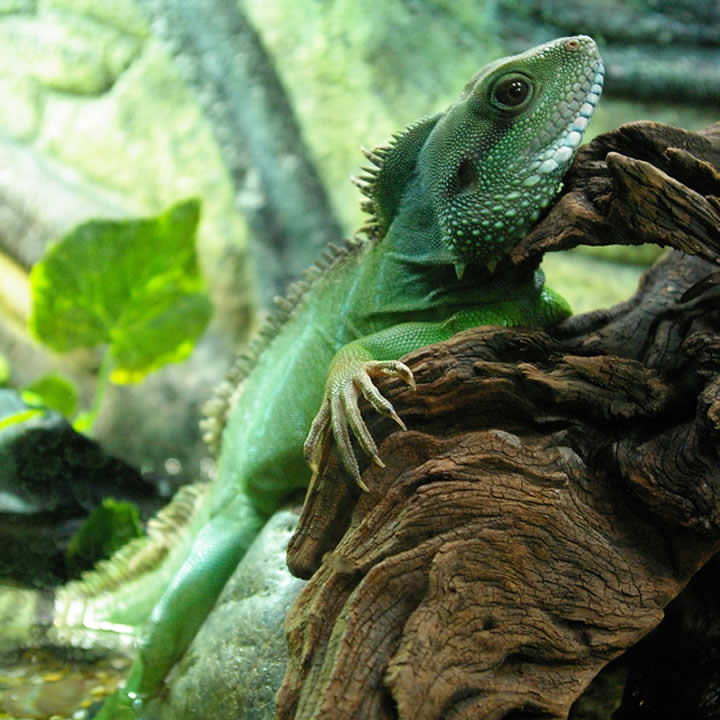Adequate light and heat are necessary for the psychological and physical well-being of any living organism. Plants derive nutrition from sunlight and water which in turn makes them grow. Animals also need sunlight for their daily activities. There would be no life if there were no light and heat. As it is in other living organisms, the same applies to reptiles. For any reptile lover who wants to keep them as a pet, understanding their daily light and heat requirements is necessary.
For starters, the activities that a reptile takes part in is decided by the sun. Besides the comfort and warmth that the light produces, it also supplies essential vitamins that are required for the proper functioning of the body.
Providing your reptiles with adequate light and heat is as important as providing them with food according to VA Reptile Rescue. The circadian rhythm dictates when an organism should sleep or eat is determined by light and heat. Any organism that doesn’t follow the circadian rhythm will experience increased body stress and run the risk of improper body function. To mitigate this risk, there are alternate ways of providing lighting and heating for your pet. If you would like to learn how to do this in simple steps, follow the tips given in this article.
Understand Lighting
The ultraviolet spectrum is divided into UVA, UVB, and UVC, and the three of them are present in sunlight. Two types of lights are necessary for your reptile enclosure, namely; UVA and UVB. Without this, the health of your reptiles will be in jeopardy. Both UVA and UVB play separate but important roles in the well-being of living organisms.
UVA is responsible for regulating important behavior in living organisms such as feeding, mating, diurnal movement, and other such activities.
UVB is responsible for Vitamin D3 synthesis- a necessary ingredient required for the absorption of calcium.
UVC is responsible for the killing of bacteria, although this is not necessary when keeping reptiles because a high-level exposure to it poses a great risk for most animals.
Plastic, glass, and other kinds of protection from sunlight usually filter out important ultraviolet wavelengths. For this reason, it is necessary that you create directly expose your enclosure to these light sources. Ideally, you should replace your light sources after every 12 months because the UV output from the bulbs will continue to reduce as you keep using them.
Choosing the Appropriate Reptile Enclosure
So far, we have established the importance of providing your reptiles with adequate light and heat. The right bulb for your reptile enclosure is dependent on the types of reptiles you are keeping there. However, there is a general rule of thumb you can follow if you intend to keep different types of reptile together in the same enclosure.
Some bulbs are only suitable for lighting, others are good for heating, and others are good for both purposes. Reptiles like tortoise, iguana, turtle, chameleon, bearded dragon, etc. require a high amount of UVB lighting; therefore, if you are raising them, you need UVB bulbs. Virtually every reptile requires UVB lighting.
When using the UVB bulbs, allow it to mimic the sunlight and night sequence by switching on during daytime and switching off at night. Generally, you should put on the bulb for 12hours during the day and off for 12 hours at night; however, each reptile may require slightly different variations in time.
Installing a programmable power center can help you properly manage when the light should go on, and when it should go off. For the comfort of your reptiles, you must provide an alternative heat source at night when the light is put off. A red or black bulb can serve that purpose. You could also use a heat emitter or heat mat to supply the much-needed heat so that the reptile can rest well during night time.
As we have stated earlier, every species of reptile has its individual need, i.e the right condition for a lizard may not be the same for a snake. Knowing this will help a keeper make the right choice. Similarly, there are different forms of lighting and heating systems required for each type of terrarium, therefore, researching to know the best for yours is very important.
It is best to do research on the various kinds of lighting and heating that align with the specific terrarium you’d want to construct. Keeping a reptile as a pet is a great idea and creating the right environment for your Pet’s optimal growth and survival will save you from unnecessary headaches.

